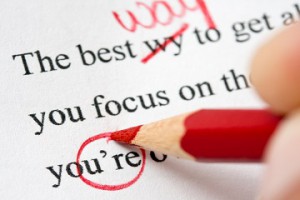 The next step after writing the dissertation is revising and reviewing the text. This is needed to make sure that all ideas are to the point, all claims have evidence, and the writing is clear from mistakes. So don’t hesitate to spend enough time on proofreading your PhD thesis.
The next step after writing the dissertation is revising and reviewing the text. This is needed to make sure that all ideas are to the point, all claims have evidence, and the writing is clear from mistakes. So don’t hesitate to spend enough time on proofreading your PhD thesis.
Proofread the Whole Text
Put a dissertation plan in front of you and start proofreading your work. Ask yourself if you have revealed the main question of the dissertation and developed strong argumentations.
Check out the correspondence of content to the thesis title. Maybe you should make some modifications and changes in the topic, if the focus has shifted.
Think about if your text is readable and understandable for a reader that has no knowledge of the topic. Does your text explain the concepts and terms of your dissertation?
Proofread Sections
Read every section and check their relevance by giving them a title. Does the information from the section belong to it? Analyze the content and replace those parts that are more appropriate in other sections or cut the text that is repeated in the dissertation.
Take a look at your analysis and check if it is enough to prove your point of view. Also, review your descriptions. Are they clear for your reader? Will the reader understand the points and how they address the questions and problems within your inquiry?
Proofread Paragraphs
Check every first sentence of each paragraph. Do they introduce the idea of the paragraph and how it relates to the discussion? Make sure during paragraph editing that each paragraph has one key idea.
Use opening phrases such as “Furthermore,” “In addition to,” “In contrast to,” or “However” to make a transition between paragraphs and show relation.
The paragraphs may include the following sentences:
– The development or an explanation of your point of view;
– A reference or quote that supports your ideas;
– A personal example;
– The question that remains to be solved.
Proofread Sentences
Reviewing a huge text is hard work and it’s nearly impossible to avoid mistakes. Check that your sentences are not longer than three lines and have no grammar, spelling or punctuation mistakes.
To be more concentrated, read the text aloud. Check quotation marks of all quotations (single or double).
Search for commonly confused words like their/there or advise/advice. Make sure that apostrophes are used appropriately.
Ensure that your sentences are clear and understandable. Cut every word and phrase with no semantic load or is duplicated, and read again.
Make sure the key theories and key words are spelled correctly. Check the use of capital letters and correctness of abbreviations.
